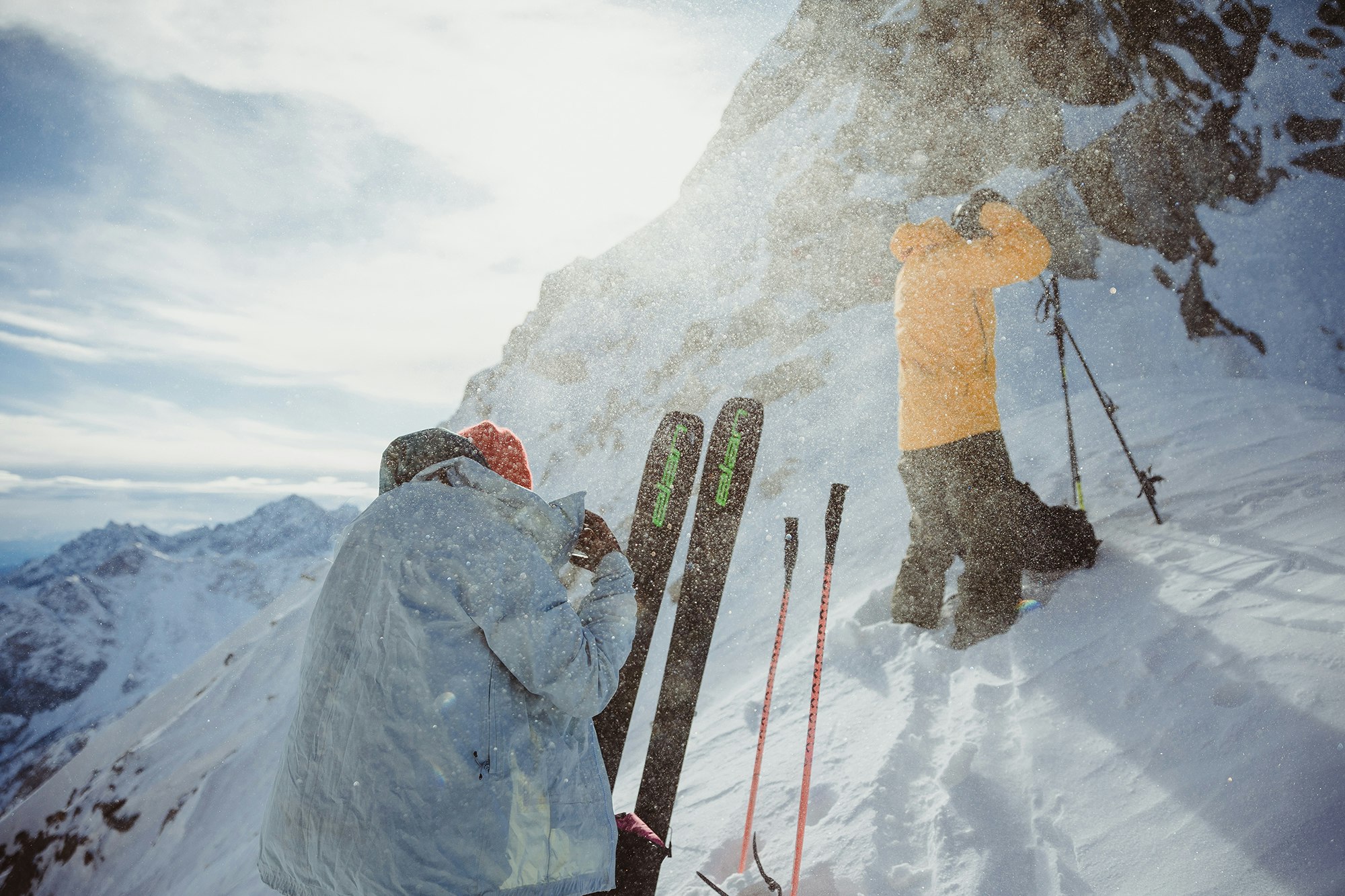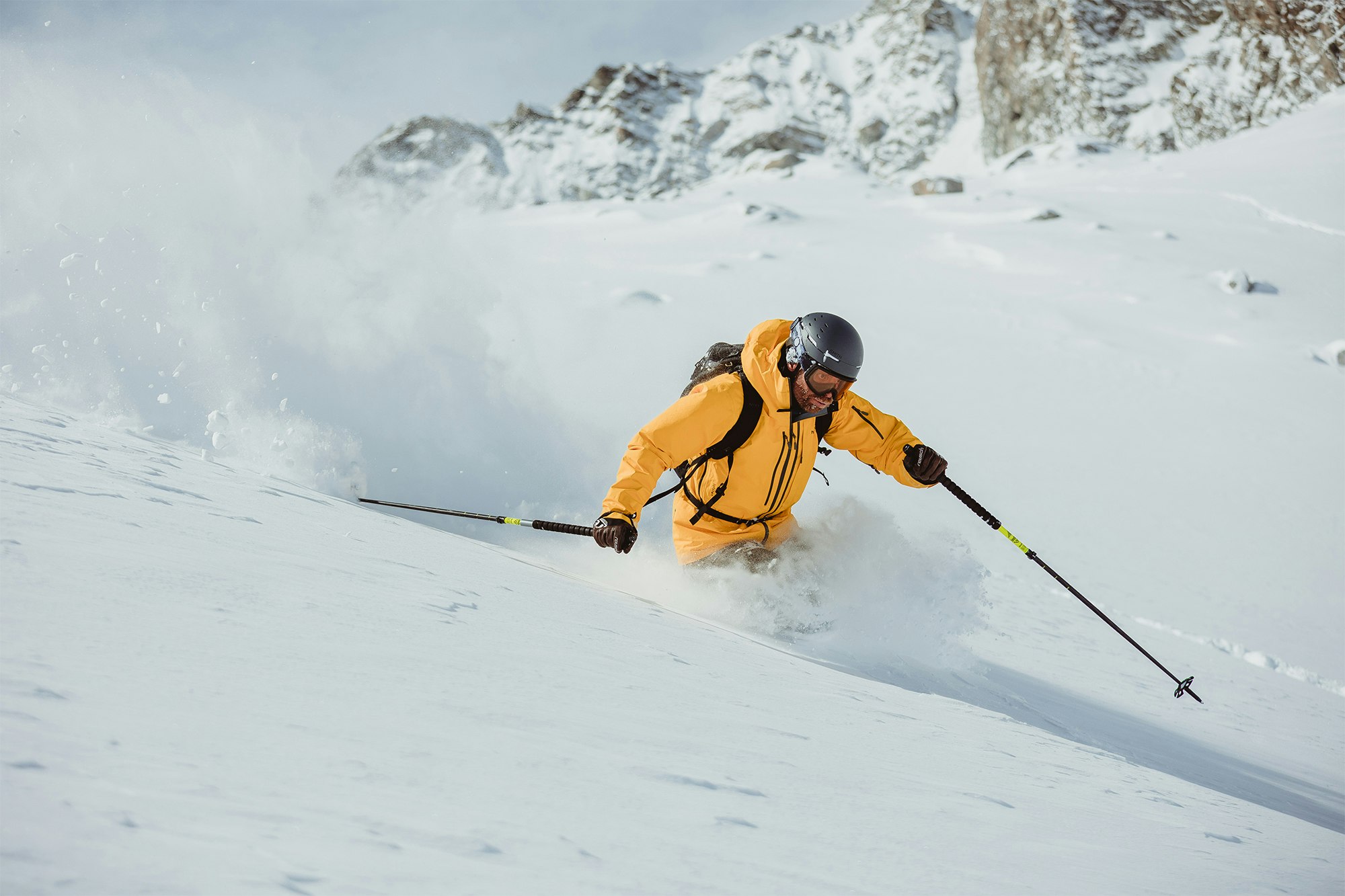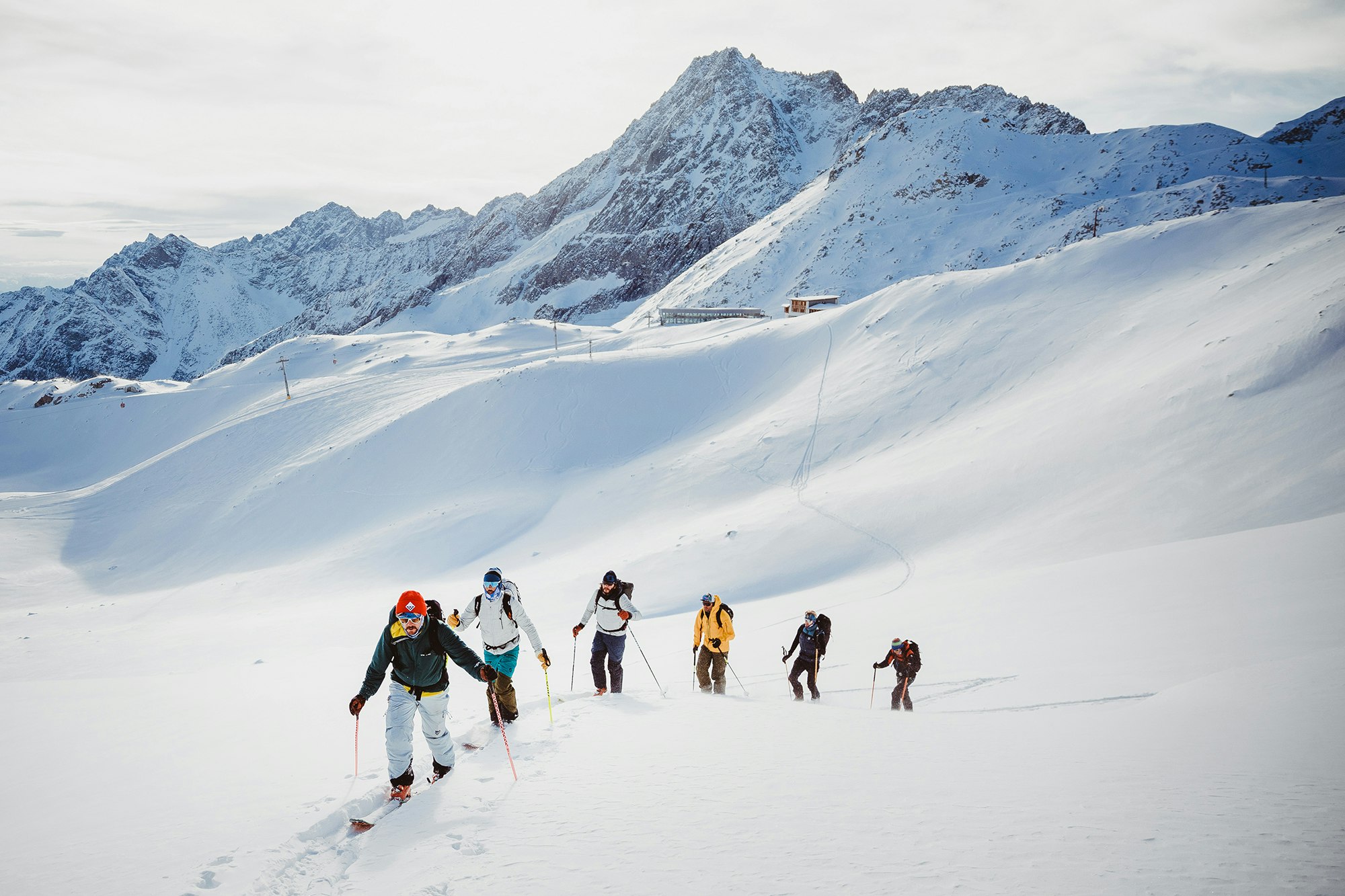The heart of the skimo world
How touring skis, boots and bindings are changing
- Author: Davide Marta
- Photographer: Nicola Damonte
There are no discounts on pure skiing pleasure. Having the right setup makes all the difference to an easy climb and a fun descent.
Ski touring has always been the midpoint of ski mountaineering. This obvious statement can be seen, in part, in the weight and dimensions of the equipment used in this segment. But it is also a core segment in the sense that, in recent years, it has attracted the most interest among newcomers to the sport, drawn by the age-old compromise of lightweight and performance that only touring skis and boots can give you. It is now also the middle ground in which diverse expectations converge in the eternal back and forth between those who seek performance and those who want simplicity and versatility.

Gone are the days in which it was only the “coolest” who were taking 1500-gram skis up long ascents as if they were traditional touring skis. Now everybody’s doing it. And we can confidently state that we contributed to this trend, having worked for years to ween ski mountaineers off their dependence on lightweight gear. But while not more than three or four years ago — pre-COVID let’s say — certain setups were for just a talented few, seen more as a source of inspiration for the masses, now manufacturers are making everyone happy. Skis keep getting easier and more forgiving. Boots are more comfortable and don’t hurt as soon as you put them on, and they even forgive postures that aren’t perfectly balanced. Those “talented few” who led the way here have now been caught a bit off guard with more anonymous skis and boots that aren’t as responsive as they would like.

In short, ski touring had always been about substance and performance. Now, suddenly, everyone’s watching the scale. Skis are more accessible at 95-98 waist widths and decent weights that enable even average and entry-level skiers to enjoy stability and float in all snow conditions. In just a few seasons, the industry has become more democratic, to the advantage of the companies that believed in this shift and were able to make hay with their flagship models after a bit of restyling to make them lighter and easier to ski. A great many skiers who dreamed of these skis but didn’t feel worthy have been encouraged to try that little bit more, and the trend spread like wildfire.

Ironically, the trend has been just the opposite in light touring. While remaining within the lightweight range of that segment, light touring skis are getting more heft and personality in shapes that float better, and minimalist, two-buckle boots are responsive enough that they could almost be used on ordinary touring skis.
So a middle ground that should only broaden going forward. While this segment may meet current market needs, it can turn off certain pro riders, who are left with having to go light on 88s (which would have been unthinkable just a few seasons ago) or focus on heavier, freeride models or even hybrid resort skis with pin bindings. As always, the price to be paid is the extra effort required on the climb. But that’s a story as old as time. It’ll be up to the manufacturers to figure out whether to milk this while they can or start to think about changes to be introduced gradually and that will be all the rage in a few years.
Share this article

